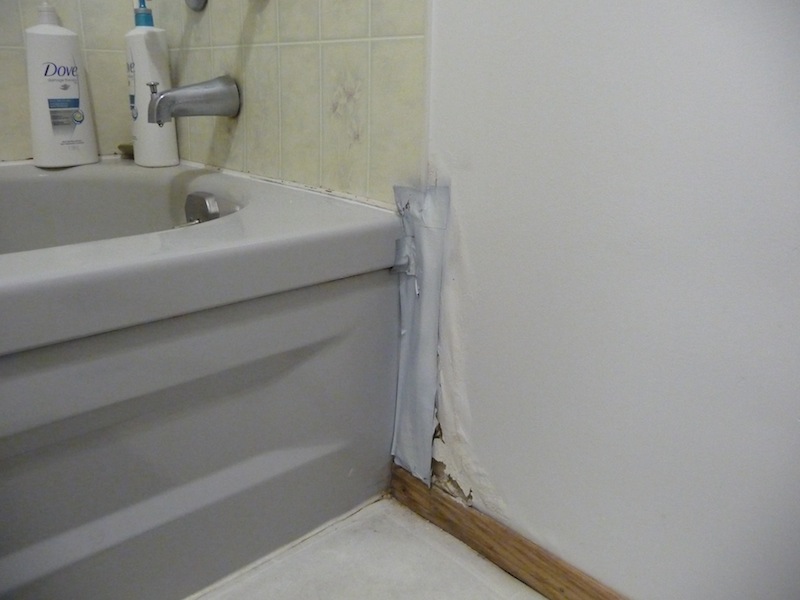Do you find yourself trying to find details on How to Fix a Water Damage Bathroom?

The shower room is exceptionally at risk for wet buildup and also possible water damages as a result of the frequent use of water in it. This article provides straightforward examination strategies to help spotting water damage risks.
The regular use water in the washroom makes it exceptionally vulnerable for moist accumulation and prospective water damage. By checking it frequently, you can minimize water associated problems.
The complying with collection of assessments is simple to execute as well as ought to be done as soon as in every 3 months in order to maintain your restroom in good shape and to stop possible water problems triggered by the bathtub, the shower, pipe joints and also plumbing, sinks, closets, as well as the toilet
Do not neglect executing these examinations as well as be extensive while performing them. Keep in mind that these straightforward assessments can save you a great deal of cash by offering early signs for water damages
Sinks as well as Cabinets
Sinks and closets are subjected to moisture and also moisture daily and also are commonly ignored. Inspect consistently under the sink as well as on the countertop over it. Fix any kind of drip in the trap as it might recommend drain troubles. Browse the sink, slow draining pipelines may show an obstructed drain. Change sink seals if they are cracked or loose.
Bath tub and also Shower
The shower as well as bathtub call for special attention and also maintenance. Check the floor tiles and change if split. Ensure that there is no missing out on cement between the floor tiles. Check and change broken caulking at joints where the wall surfaces satisfy the floor or the bath tub. Blocked drains pipes as well as pipes troubles will certainly avoid the tub from drying out and might show major issues under the bathtub. Talk to a specialist instantly to avoid architectural damages. Take note of stainings or soft areas around the bath tub walls as they might indicate an internal leakage.
Plumbing
Signs for water damage are difficult to detect considering that most pipes are mounted inside the walls.
Pay unique attention to flooring and also walls dampness and spots as they might indicate an unseen plumbing problem. Inspect dampness degrees in adjacent spaces too.
The Toilet
The bathroom is an at risk water junction. Inspect the water lines and also search for leakages around the commode seat, in the hose pipe, as well as under the water container. If you detect any type of indications of dampness on the flooring around the toilet, check for leaks in the toilet edge and also container seals.
Be aware that hanging toilet bowl deodorants boosts the opportunities for obstructions.
Water Damage Signs In The Bathroom To Avoid Cleanup
Musty smell
This is one of the easiest signs to catch because musty smells are so odorous. The damp, earthy, moldy smell should be a big red flag. The smell will develop when moisture gets trapped in surfaces, and begins to facilitate mold growth. Leaking pipes under cabinets, inside walls, and behind shower fixtures will cause moisture to stay trapped and not dry, which will lead to mold growth and spread. As soon as you notice any musty smells in your bathroom, have it checked for hidden water damage and cleanup signs.
Visible mold
If the smell isn’t there to give it away, sometimes you will actually see mold growth. Finding mold in your bathroom is a serious problem, because mold is very harmful to your health. By the time mold growth is visible, it also means that water damage has already occurred and been present for some time. The only way the mold problem can be resolved is to find the source of the moisture and get it stopped. To safely and adequately remove mold, you need to have professionals handle the remediation. Do not waste any time in getting mold problems addressed, fixed, and sanitized so that you can protect you and your family from the many respiratory symptoms caused by mold exposure.
Damaged floors
Bathroom floors should be able to withstand some exposure to water while still remaining in good condition. However, when excess exposure or water leaks occur, they will begin to damage even the most water-resistant flooring. If you notice any cracking, bubbling, staining, or warping on your bathroom floors, there is probably a water leak somewhere causing the distortion. If you notice areas of the floor have become softer, or even have a spongy feeling, there is probably damage to the subfloor. Subflooring is typically made up of plywood. When plywood is exposed to water or moisture, it will absorb it. Once it has become saturated, the weight of the excess water will cause the wood to swell and soften. Check the floors in your bathroom frequently to catch any of these sings before they lead to damaged subflooring.
Changes on walls
When water leaks behind walls, it will cause changes in the drywall. Peeling plaster, blistering paint, and soggy wallpaper are all good indicators that excess water is building up behind the wall. Water leaking behind drywall will cause it to swell and be soft to the tough. If you start to notice gaps along the trim of your walls, or where tile meets the wall, it could also be a strong indicator that there is a leak behind the wall. Any changes, distortion, or damage on the walls should be evaluated as soon as you notice it to prevent further water damage and cleanup.

We hope you liked our part about How to Repair and Prevent Bathroom Water Damage. Many thanks for taking a few minutes to browse our article. Sharing is good. You never know, you will be doing someone a favor. Bless you for your time. Don't forget to check up our site back soon.
Give Me A Quote!